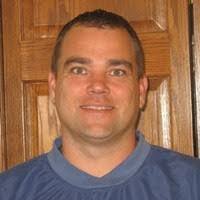Meet the Expert: Shane Paulson, MA, EPC

Shane Paulson is a board-certified exercise physiologist, and CEO of the American Society of Exercise Physiologists (ASEP). He holds bachelor’s and master’s degrees in exercise physiology.
In addition to his work with the ASEP, Paulson is the CEO of PhysioLogic Human Performance Systems, a consultancy and service provider that creates outcome-based exercise physiology programs for individuals, corporations, government agencies, and nonprofits. Across all his roles, Paulson is committed to the professionalization of exercise physiologists across the country.
The Enduring Importance of Physical Fitness in Schools
In Paulson’s mind, learning about exercise isn’t optional. We all have just one body, and it’s got to last a lifetime. Without proper physical exertion, that body weakens. Sedentary individuals have reductions in heart health, lung health, circulatory health, muscular-skeletal development and function, neurological health, and even cognitive health. And in a world that’s focused on advanced technology, with less physical demands for work through adult life, the removal of structured activity and exercise education creates what Paulson calls a double whammy of sedentary living.
“We must think about how these young people will fare in their later years if they are never exposed to the preventative power of exercise,” Paulson says. “It really is up to decision makers to understand and accept the responsibility for what they are considering taking away from today’s youth: an essential tool for the individual to care for themselves.”
While some in the Michigan State Senate are looking to de-emphasize the importance of physical education, Paulson and his colleagues at the ASEP are working in the opposite direction. When the ASEP formed 20 years ago, it set the goal of standardizing undergraduate curriculums for exercise physiology and established a peer-reviewed board certification credential for exercise physiologists. That work contributed to the Bureau of Labor Statistics classifying exercise physiologist as its own occupational title for the first time in 2015.
Since then, exercise physiologists have been working in more varied areas than ever before. They work in bariatrics, where exercise is a key component of weight management. They work in oncology, where exercise has proven beneficial to those with cancer. They work in pain management, in diabetes prevention and control programs, and in elder care and skilled nursing facilities. More and more exercise physiologists are getting involved in entrepreneurship as well, building innovative programs for workplace wellness centers, web-based personal training, and tech-driven physical engagement.
“With the increasing benefit of technology in the digital age, we should be spending more of that ‘saved’ time on learning about our bodies’ response to exercise, and how we must use this knowledge in action to become a healthier population each generation,” Paulson says.
The Mission of the American Society of Exercise Physiologists (ASEP)
The ASEP is still a relatively young organization, as is the unified and distinct profession of exercise physiology. One of ASEP’s biggest accomplishments has been creating a standardized definition for the profession, which draws from 60 different undergraduate degree titles that range from kinesiology to biomechanics, from physical education to exercise science. The ASEP has begun accrediting these disparate programs under a single umbrella for would-be exercise physiologists.
Anyone who has a degree in exercise physiology (or one of the other 60 related titles) can now apply to take the ASEP’s board certification exam. Candidates who pass that exam will earn the Exercise Physiologist Certified (EPC) designation. They’re then listed on the ASEP’s EPC registry. Individuals with this credential have exceeded the peer-established minimums expected to hold the title of exercise physiologist, work under the prescribed scope of practice, and adhere to the ASEP’s professional code of ethics.
“The founders of ASEP envisioned this as the way we begin to empower exercise physiologists as professionals,” Paulson says. “We can now begin to advocate for ourselves by creating new and better ways of employing our expertise and skill.”
Despite all our new technology, physical education isn’t any less important now than it was a generation ago. But thanks to the ASEP, our knowledge of what works in exercise physiology, and how, has improved. Physical education doesn’t need to be removed from school curriculums; it just needs to be upgraded.
What State Senator Jim Bumstead and Senate Bill 600 fail to realize is that physical education, health, and gym are science classes. And science tells us that regular exercise, when done properly, improves mental health, prevents chronic disease, and lowers health costs. At a time when the US is on the brink of facing enormous medical costs and an overburdened health system, it can’t afford to be cutting access to exercise in its schools.
“It’s an exciting time to be an exercise physiologist because there are so many ways and places to apply this knowledge to help people,” Paulson says. “Now is the time when it serves us all to know more about exercise—not less.”
Exercise physiologists in Michigan, as well as any parties concerned with Michigan Senate Bill 600, can reach out to Paulson at the ASEP here.

Matt Zbrog
WriterMatt Zbrog is a writer and researcher from Southern California. Since 2018, he’s written extensively about trends within the healthcare workforce, with a particular focus on the power of interdisciplinary teams. He’s also covered the crises faced by healthcare professionals working at assisted living and long-term care facilities, both in light of the Covid-19 pandemic and the demographic shift brought on by the aging of the Baby Boomers. His work has included detailed interviews and consultations with leaders and subject matter experts from the American Nurses Association (ASCA), the American College of Health Care Administrators (ACHCA), and the American Speech-Language Hearing Association (ASHA).